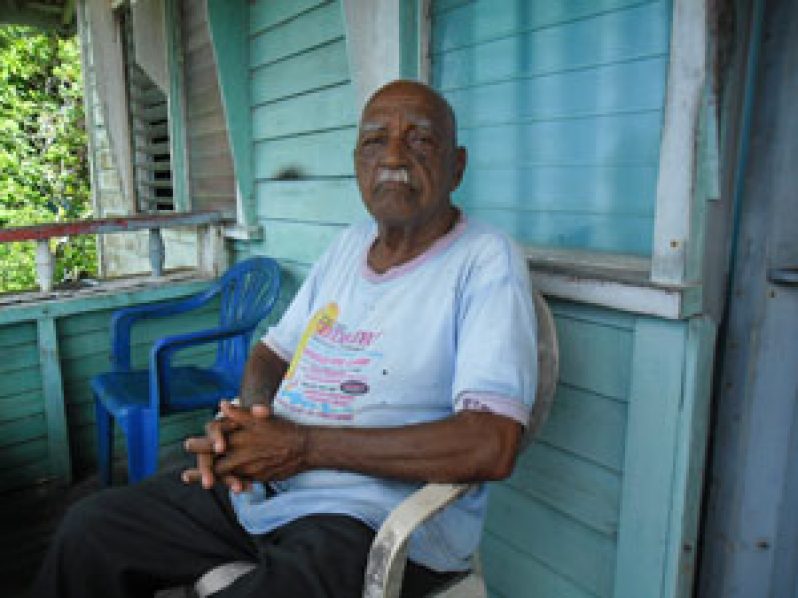IT recently dawned on me that each week we were featuring villages with rich economic boom, significant development potential, and/or positive agriculture possibilities.
 But what about those villages which, over the years, had sported sparkling beauty and continuous positive development, but had tumbled from their glory and now lie in complete ruin or in an ongoing state of deplorable decay?
But what about those villages which, over the years, had sported sparkling beauty and continuous positive development, but had tumbled from their glory and now lie in complete ruin or in an ongoing state of deplorable decay?
So we decided to switch things up a bit, and we travelled all the way to Burma, a village that was up to the late 1980s a hive of economic activity , and one of Guyana’s richer agricultural locations and rice producing alcoves.
Those fortunate enough to have visited Burma in that era would have remembered the swarming crowds, especially on weekends as workers and vendors converged to ply their trade and make purchases. They would remember trucks speeding along a well-paved road, transporting paddy to be milled from all across Guyana. They would also reminisce on busloads of employees hooting in delight as they journeyed to this ‘economic galaxy’ in the early mornings.
Today, Burma is a figment of its former self, having fallen on hard times after the Guyana Rice Milling & Marketing Authority (GRMMA) closed its operations there in late 2002.
Burma of old
To regale us with tales of Burma’s economic prosperity in years gone by, and its tumultuous journey to near ruin was 71-year-old Village Councillor, Mr Morgan Allicock, who still resides in what is left of a once thriving village.
Burma is a rice-producing village situated at Mahaicony on the East Coast Demerara, some 65 km (40 ml) east of Georgetown.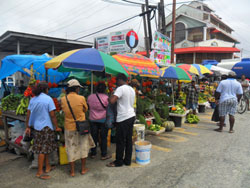 The village is known for housing the Burma Rice Development Station, the only facility of its kind in Guyana, where new varieties are tested for desirable traits. Work has been carried out on breeding additional blast-resistant varieties of ‘rustic’ type rice, as well as aromatic and salt-tolerant varieties.
The village is known for housing the Burma Rice Development Station, the only facility of its kind in Guyana, where new varieties are tested for desirable traits. Work has been carried out on breeding additional blast-resistant varieties of ‘rustic’ type rice, as well as aromatic and salt-tolerant varieties.
Burma is also the location of the Mahaicony-Abary Rice Development milling complex. Both of the foregoing institutions are located two miles south of the East Coast Highway.
In its economic heyday, which lasted up until the late 90s, Burma was the centre of attraction in every sense of the word, and the agricultural and economic haven to which every rice farmer and businessman turned for lucrative profit-making possibilities.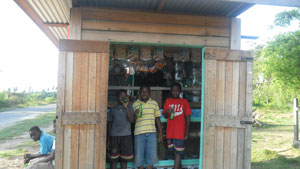
The rather extensive rice-milling complex was then owned by the Guyana Government and governed by the GRMMA, and producing rice bountifully for both local consumption and export purposes, and everyone was enjoying the positives, even with a few minor glitches.
According to Morgan Allicock, farmers came from near and far to mill their paddy at the Burma complex; and those employed with the entity were indeed enjoying the spoils of life, since supervisors, managers and those in elite positions were given posh houses to live in for free, and everything was 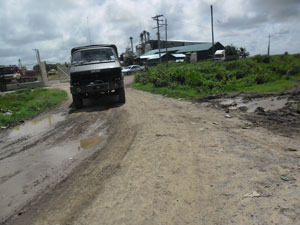 splendid.
splendid.
Those privileged to be living in the community at the time not only enjoyed 24-hour electricity, but potable water as well from the well in the rice mill compound that was being managed by the owners.
Streets were paved, and when the lights came on at night, along with the massive floodlights from the rice complex, Burma looked like a ‘Little Tokyo’ in the making. The billowing smoke from the massive chimneys that allowed excess smoke to escape into the skies signalled the presence of great economic and agricultural development.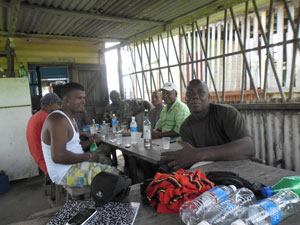
It was a pleasant sight to behold the surge of employees on their lunch break as they rushed to the numerous food stalls located just outside the compound, where vendors smilingly welcomed them, well knowing that their presence meant a fast dollar and large dividends.
And the clothes vendors, too, were making quite a fortune, and made large profits on the ‘pay-down-pon-it’ arrangement they had with many employees.
Transportation to and from Burma was never a problem back then, since, in the olden days, one could have either hitched a ride on any car, bus or truck because of the camaraderie that existed between them and the drivers. And, of course, there were trucks and buses specially assigned by the Company to transport workers to the complex. In  general, life was beautiful, especially for those employed with the Company and those residing in the homes provided by their employer.
general, life was beautiful, especially for those employed with the Company and those residing in the homes provided by their employer.
Burma was divided, as always, into two sections, these being the Burma Housing Scheme, which came under the mantle of the Ministry of Housing; and the Government Scheme, as some called it, in obvious reference to the cluster of lavish houses that were given employees.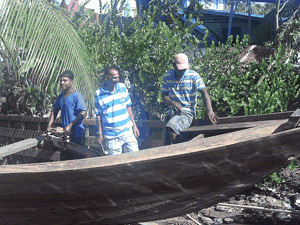
Economic downturn
According to GRDB’s Mr Jagnarine Singh, the fall of the Burma Rice Mill was occasioned by the IMF-led Structural Adjustment Programme initiated before 1992 by then Finance Minister, Mr Carl Greenidge; things got so bad, he said, that many mills had to cease working altogether and sell out their operations.
Eventually, the fortunes of the Burma Mill also went south, but thankfully, it was revived in 1993 by the PPP/C-led administration. Due, however, to the low prices being paid for paddy, intense competition, and other issues affected the rice industry in 1999, this mill was also closed in 2002. When that happened, it heralded doomsday for hundreds of employees, who were inevitably forced to find new jobs. It was chaos and cataclysm for employees all around Guyana, and their lamentations could be heard on every street and byway in every part of the country.
When that happened, it heralded doomsday for hundreds of employees, who were inevitably forced to find new jobs. It was chaos and cataclysm for employees all around Guyana, and their lamentations could be heard on every street and byway in every part of the country.
Many found themselves in great debt, and the cries of the unemployed were a sad so ng to the ears. Naturally, many sought work opportunities in the hinterland regions. And of those who were left, some began poultry farming, and others sought jobs at the few smaller rice mills that had sprung up over time.
ng to the ears. Naturally, many sought work opportunities in the hinterland regions. And of those who were left, some began poultry farming, and others sought jobs at the few smaller rice mills that had sprung up over time.
Mr Allicock said some vendors literally wept when the Burma complex closed down, since many employees were put out of jobs, leaving behind large unpaid debts for food and clothing. It was a very heart-rending sight to watch, he said, as huge masses receive their last salary or wage, and left the location teary-eyed in many cases.
The gates to the compound were chained and all electrical machinery was unplugged, leaving a deathly silence on the location. No longer did the smoked billow into the air, nor was there any bustling of employees around the silos.
Food vendors locked their shops and disappeared, save for the popular ‘Jeffett’, as he prefers to be called, who continued to open daily in the hope of netting even meagre sales.
Persons residing in Burma, Champagne, and along the Burma Public Road missed the chugging sounds of the trucks,  which no longer transported paddy to this location for milling purposes.
which no longer transported paddy to this location for milling purposes.
There was a certain eerie silence that betrothed the rice mill when it was closed officially.
Many past employees continued to live in the houses they had been provided, but with closure of the mill came the problem of electricity, since it was the mill that was powering the Government Scheme.
According to Mr. Allicock, problems in accessing water soon developed, since the artesian well that was providing the precious fluid was housed inside the mill compound. He said that Government gave over operation of the mill to several private persons to see if they could effectively make it profitable, but they all failed, until SAJ Rice Milling Complex came into play, and they surely made a difference.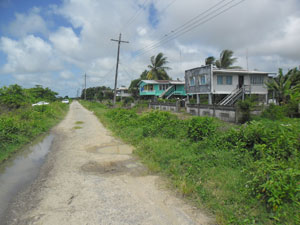
SAJ RICE GROUP INC. is a subsidiary of the Khawly Group of Companies. It was established in September 2005 as a private company registered in Guyana, has since earned a reputation for quality products, and has become one of the largest producers/exporters of rice in the country. SAJ Rice has a thirty-five-year contract with the Government of Guyana to operate the MARDS Rice Milling Complex on Burma Road in Mahaicony, East Coast Demerara.
The mission of this company is to provide the finest quality of rice, excellent customer service, and job opportunities for the Guyanese people.
Luckily for Guyana, the Rice Research & Development Centre was taken over by the Guyana Rice Development Board 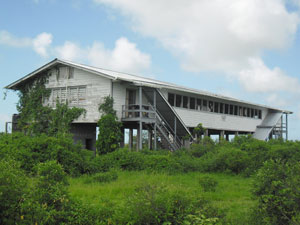 (GRDB), and is still functioning to its fullest capacity today.
(GRDB), and is still functioning to its fullest capacity today.
Burma Today
Burma today is the total opposite of what it used to be.
The access streets are all impassable, and most of the houses occupied by past employees have been left to rot after many relocated in search of a better life.
The Administrative Offices, which had attracted large crowds on pay weekends, are now falling apart, and vines and plant pests have found a welcome home there.
The primary school is in a deplorable state, and vines have climbed up the walls and have entered the building via the windows. Abandoned houses are overgrown with vines and bush, and one cannot help feeling remorse as one considers ‘what was there and has disappeared’.
Only three food stalls operate there now, and they are more than adequate to satisfy the culinary needs of the much smaller volume of workers employed by the SAJ Rice Milling Complex.
The Burma Main Road also is in a deplorable state, and has been so for many years now, according to residents. Rice farmers have recently complained and protested its horrible condition; and in response, Regional Chairman, Mr Bindranauth Bisnauth has promised that repair works would be done on the road soon. Excavators are presently levelling the road, but the inclement weather is preventing comprehensive repairs from beginning, according to the Chairman.
Now that the rice mill is gone, and with it Government’s intervention into what used to be the Government Scheme, the buildings are all rotted and constitute a sore sight to look at.
Things seem to be a tad better in the Burma Housing Scheme, but there, too, many residents have deserted their homes, and the buildings are decaying rapidly. To date, there are some twenty-six occupied houses in this scheme, providing succor to nearly two hundred residents, who are loud in their praise of the SAJ Rice Milling Complex, which they said has continued to provide them with potable water since taking over operations of the mill. According to Mr. Allicock, this came as part of a special arrangement between SAJ and the Ministry of Agriculture. Residents do not have to pay for this service.
Rice farmers still continue to plant extensively in the backlands and outskirts of Burma, but getting to their rice fields during the rainy season is quite a difficult task, according to a few of them.
Today, the Burma housing area has become like a dense jungle, with towering bushes and thick growths of grass even in the yards of some residents.
The road leading to Mora Point, which is a high-intensity farming area, is terrible, and rice farmers are appealing to the relevant authorities to intervene in this situation.
The few persons remaining in Burma do not have any expectation of entertainment luxuries, since there are no nightclubs there. The closure of the mill has dealt them a blow that, over time, has caused residents to adapt to leisure time relaxation by means of watching television or listening to music.
And many would not venture for fun in outlying areas, since getting back to Burma during the nights after a party is, in most cases, a well nigh impossibility. Just a few brave hire cars operators dare to undertake travel on the Burma road, and they certainly do not ply that route at nights.
They say that when you are offered the finer things in life, cherish them and make them prized possessions; for they can be taken from you in the twinkling of an eye….
Burma was once the very essence of economic and agricultural perfection. It was once the very pinnacle of social development and transcending sophistication, but today it bears not even the slightest resemblance of its former glitzy self. What remain are the bemoaning ruins of sections of the mill that deteriorated, and the valuable houses that followed after.



.jpg)




